
Skoda Superb Hatchback (2015-2023) long-term test

Want a car to cover huge mileages, and need acres of space for people and luggage? The ideal car would be a luxury limousine, but your budget might not stretch that far. We’re running a Skoda Superb L&K long-term test for six months to see if it’s possible for a family hatchback to double as luxury continental cruiser.
Reports by Keith Adams.
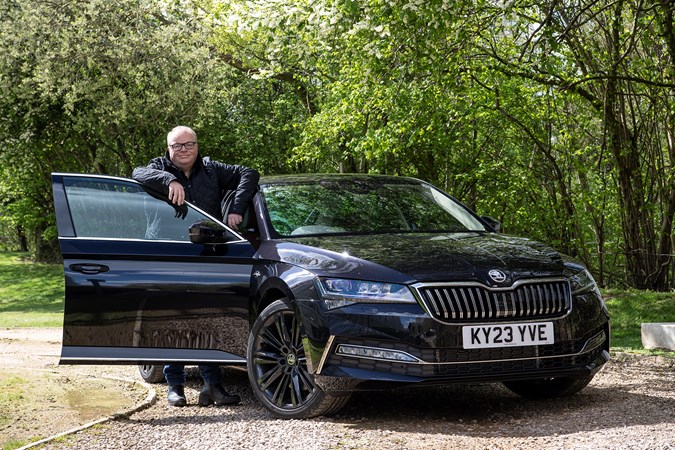
Jump to:
- Cabin and controls
- Performance, handling and economy
- Comfort on a European road trip
- Practicality (and launch control)
- Running costs (on another Euro road trip)
- Verdict – should you buy one?
Update 1: Welcome
Introducing the Skoda Superb L&K Hatch 2.0 TSI 280 DSG 4x4
Welcome to the extended long-term review of the Skoda Superb, one of our favourite large family cars despite being on sale since 2015. It’s a car that all of the Parkers testing team have a lot of time for – it’s roomy, good to drive, efficient and effortless to live with.
So, you know it’s good. If you’ve arrived here via the main review, you’ll already know that, and will be keen to find out what this unpretentious large hatchback is like to live with over the course of six months. If you’re a regular reader (thank you, if you are!) you will know that I’ve already run a Superb Estate for a year, and it proved to be a brilliant family car, and one I was sad to say goodbye to.
If you keep up with current affairs, you’ll already know that the Superb is due to be replaced in 2024, so I am running it in its twilight years. So, to give it a proper send-off, we’ve gone for the range-topping L&K model in 280hp petrol form, and optioned it with some features to help it on its way to covering long distances with the minimum level of fuss and maximum comfort.
Check out the Skoda Octavia specs page on Parkers for the entire range – especially worth bearing in mind when it comes to pricing up your car.
What you get with a Superb L&K
Sitting at the top of the Skoda Superb range, the L&K comes fully stocked as you’d imagine. When it was last facelifted in 2020, it received a number of useful tech upgrades that kept it up to date, not least in terms of infotainment and connectivity. Here are the top five features you get as standard:
- Columbus sat-nav with 9.2-inch touchscreen display and integrated Wi-Fi
- Adaptive cruise control and lane-keeping assist
- Dynamic chassis control with drive modes
- Wireless Apple CarPlay/Android Auto
- Tri-zone climate control
That’s a subjective list and it doesn’t really scratch the surface of what the Superb does, but it should give you an idea of how well equipped it is. But despite that, I’ve added £4,300-worth of optional extras, which I’ll go through in the next update.
I’ve recently moved home, and now live three hours from the office, and the plan for the Superb is to see how well it copes with the long days behind the wheel getting to and from work, as well as taking in the odd overseas business trip – and keeping up with my nearest and dearest, who are dotted around the country. It’s going to work for its living.
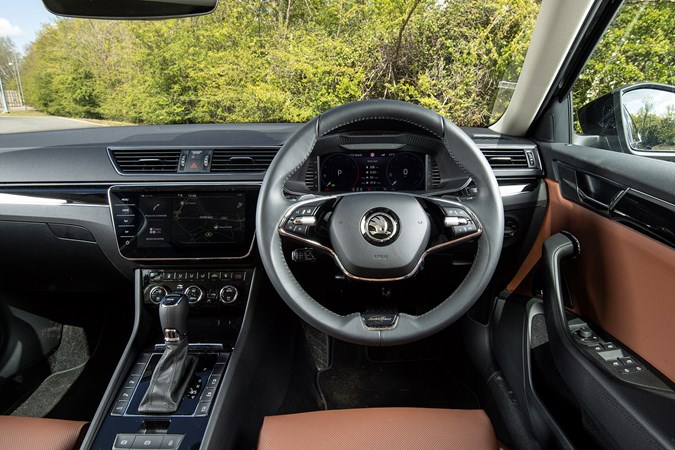
The Superb is probably larger than necessary for my life, but I seem to be forever carrying bootfuls of luggage, furniture and other nick-nacks at the moment, so its SUV-beating load capacity should prove to be an absolute godsend. It’s also powerful, is relatively economical and beautifully set up for long journeys so it really is the right car at the right time.
Early impressions are really positive. The optional Black Magic Pearl effect paintwork shines deeply and is flawless, while the caramel coloured leather interior always invites conversation, and is hugely comfortable for anyone who sits in it. Some people have made negative comments about the black wheels, they’re growing on me.
Although it’s a smilar spec to my last Superb Sportline, it’s a million miles away in terms of look and feel. Over the coming months and thousands of miles, I’ll get deep under the skin of the Superb L&K and regularly ply Britain’s and Europe’s motorways to see if this unlikely luxury car proves to be as good as I hope it will.
Update 2: Cabin, equipment and options
What’s the Superb L&K like to spend time in?
Long story short – we’re already 3,000 miles in and the Superb’s interior is becoming like a second home. It has all the room I’ll ever need and a truly impressive boot. It’s a winner so far and the tech is working a treat.
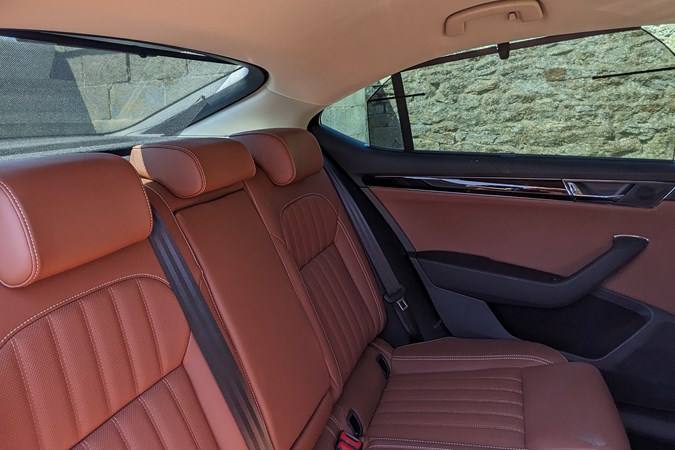
It won’t have escaped your notice that the market for large, non-premium family saloons and hatchbacks has pretty much died out. The widespread popularity of SUVs has contributed to this, but so has the rise of BMW, Audi and Mercedes-Benz, who have been offering well-priced alternatives to the more traditional staples. That’s why the Mondeo and Insignia are dead, and the Superb pretty much stands alone.
So, it’s heartening that Skoda has confimed it will replace the Superb in 2024, and will do so with a similar vehicle, packed with more contemporary tech, and – gasp – a range of petrol, diesel and hybrid powertrains. But that’s not stopped the firm developing this one, and making sure its specification is on the pace, regardless of the opposition.
It’s still classically stylish, with a rakish roofline that stands out in a world dominated by SUVs, and an imposing stance. It helps that my car is a range-topper, clad in caramel leather and packed with a number of options, but whichever model you choose, it’s a nicely-evolved package that deserves to do well.
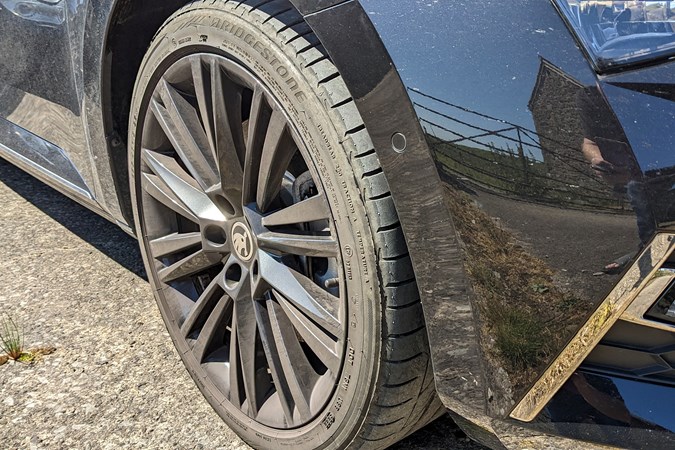
Optional extras: a mixed bunch of upgrades
I touched on the generous standard equipment of the Superb in L&K spec in my first update, but the optional extras I chose make for interesting reading. Here’s what’s been added:
- Black Magic Pearl Effect Paint: £660
Worth it… Pretty much all paint finishes are optional these days, so you may as well make sure it stands out. It might be black, but the pearl finish really pops in strong sunlight.
- 19-inch Canopus alloy wheels: £780
Worth it… Even though they are large, the Skoda rides well on them. Maybe go for silver, rather than black finish.
- Sunroof: £1,020
Not worth it… It does brighten up a dark interior, but the caramel interior doesn’t really need that.
- Sunblinds for rear window and rear side windows: £205
Worth it… These are nicely integrated and help keep the interior cool on hot days as well as add some privacy.
- Massage functionality for front seats : £205
Not worth it… A great idea for long-distance drivers, but this system is disappointing, and you barely feel it working.
Infotainment and tech
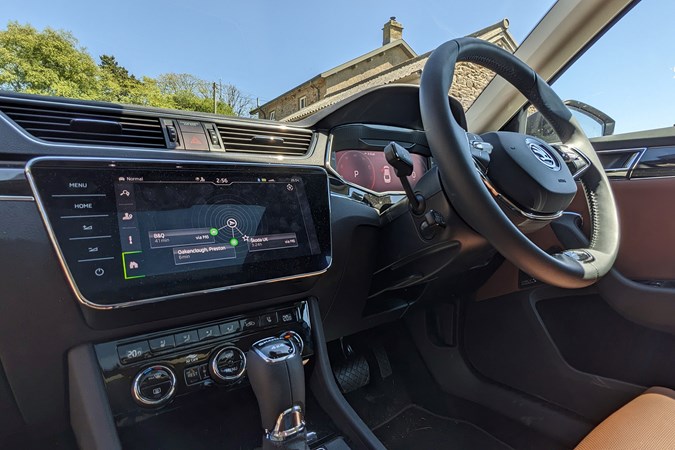
Compared with younger cars, the Superb’s 9.2-inch screen looks a little restrained. I don’t dislike that, nor do I mind that there are some shortcut keys alongside the screen for the home menu, power and volume. It’s a generation behind the latest Skoda system and none the worse for it, as it is at least simple to use and reliable. I say this because the Octavia and Enyaq’s system is glitchy by comparison, and life’s too short for that.
It has built-in sat-nav/DAB and the usual toys, but it’s also responsive to use, and once you get past the navgation’s baffling and pointless opening screen (above) it works very well. Its wireless hook-up to Apple CarPlay works a treat, although it’s a disappointment to see than Android Auto is cable only.
It’s primarily a touchscreen system, which means unsightly fingerprints and jabbing hopelessly at it when on the move. Thankfully, there’s a volume controller on the wheel, and Skoda’s in-built voice recognition system works well. It’s online connected, too (free for a year). The Canton-badged sound system is punchy and sounds warm with most types of music, but can sound a little brittle with speech, especially on DAB.
Update 3: Performance, handling and economy
How quick is it and how well does it drive?
Long story short, it’s quick and composed, and the consummate mile-muncher. There’s potential for excellent fuel economy, too.
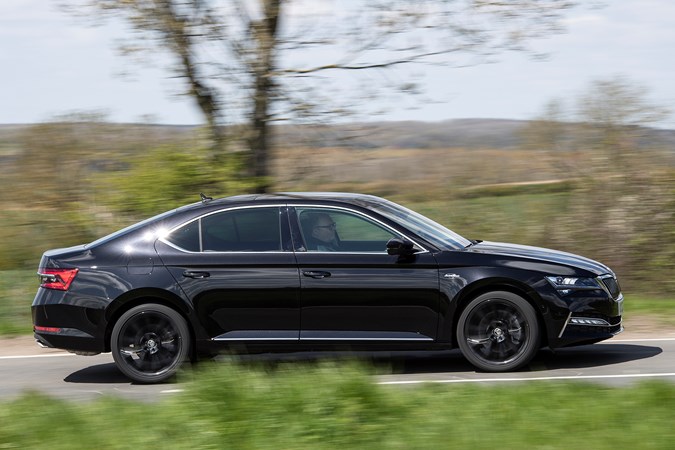
I’ve passed 4,000 miles in the Superb, and it’s fair to say that with each passing mile, I love it just a little bit more. Beyond a shadow of a doubt, that’s largely down to its laughably quick acceleration (0-62mph in 5.1 seconds, or the same as a 1980s Porsche 911 Turbo 3.3) combined with its relaxed motorway cruising. It’s fast, and doesn’t shout about it – which means I can get on without attracting attention.
Some of my younger colleagues might bemoan its lack of body control or handling finesse, but if you’re cracking on and tackling your favourite B-road, Sport mode tightens things nicely, while four-wheel drive adds a dose of all-weather confidence. But let’s be honest, that’s not really what this car is about – and if it is, you’ll be buying a BMW 3 Series instead.
Anyway, I shouldn’t get ahead of myself. Let’s start with the way it goes. Although it’s quick off the mark, acceleration from rest is not the Superb’s only talent, as you can imagine with 280hp to play with. Where it really shines is in the mid-range, where overtaking power is deployed with devastating ease. Floor it from 40mph, and it’ll be at the national speed limit very quickly indeed, accompanied by a surprisingly racy engine note.
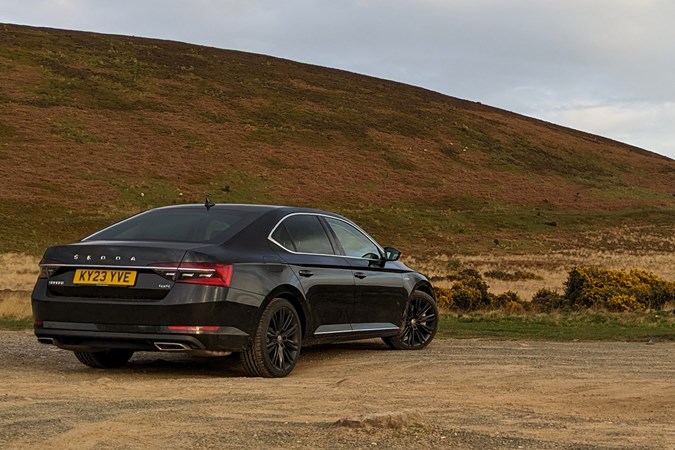
And the handling?
Most of this car’s time is spent on the motorway, either grinding up the M6 or A1, where the Superb’s high-speed stability, long legs, comfortable seats and easy-to-use adaptive cruise control really are a boon. But the final few miles of twisting B-roads are where the fun can happen, and it’s important to me that the car can take this in its stride.
Considering the Superb has been around for a few years, and it’s hardly cutting edge, it’s heartening to know that it doesn’t put a foot wrong on the challenging stuff. Its steering is precise, if lacking in feel, the brakes are strong and consistent, and once you have it in Sport mode, its lack of bodyroll and overall levels of grip and poise are heartening. Okay, it rarely brings a grin to my face, but it’s good at what it does, and can go quite quickly without upsetting passengers too.
It’s less dynamic feeling than my old Superb Sportline, but compared with the smaller Octavia vRS, it turns in a very strong performance. And more than that, it makes its smaller, sportier sister car feel dog slow. Impressive.
And the fuel consumption?
I know cars don’t need running in as such these days, but it’s interesting that as the miles build, the Superb feels increasingly good. As well as getting quicker (or at least it feels that way), fuel consumption is improving all the time. For local running, it’s not going to blow your doors off, averaging 31mpg on a mixture of back lanes and small town running.
Overall the numbers so far look like this. On my 190-mile commute to the office, mainly dual carriageways and motorways, it wil crack 40mpg without too much effort, meaning it’ll do comfortably more the 400 miles on a tank of petrol. If you take a quick look at the data table below, you can’t help but notice that this means it’s outdoing its official fuel consumption by quite some margin on the motorway. Even when it’s all averaged out, I’m still ahead of what I’d expect from the official figures.
I have a couple of European business trips lined up for the Superb, so stay tuned if I can keep it in the green zone for fuel economy, and to see if it continues to stack up as the ultimate long-distance cruiser.
Update 4: Comfort
How does it handle racking up almost 2,000 miles in three days?
Long story short, it’s quiet, quick, unobtrusive and has a long touring range. But the driver’s seat isn’t quite as comfortable as we’d been hoping for.
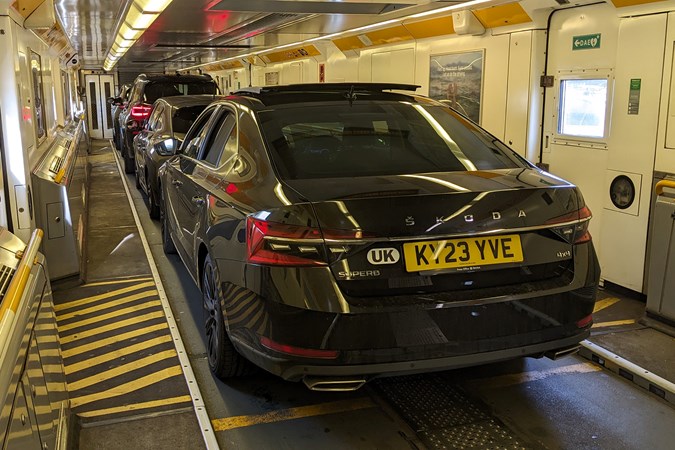
I found myself in the fortunate position recently of needing to take a business trip to a resort near Geneva – and looking at the Superb sat outside my house, I decided to do the sustainable thing and not take the plane. I’ve been becoming increasingly anti-short-hop flying for some time now, preferring to take the car instead of a sky-shredding 737 or Airbus.
It was work, I promise. I needed to test drive a pre-production prototype of the next-generation Skoda Kodiaq, and it seemed like a great opportunity to see what technology might find its way into the replacement for my L&K. The job would last a day, and I gave myself a day either side to get there and back for the 1,700-mile round trip – which is obviously more of a burden on my diary than the two-hour flight from London.
We’d see. I actually ended up splitting the journey down into two halves: from my home in Lancashire, I’d stop in Reims before pressing on to Geneva the following morning. Why? I needed to do some office work before I left home. Besides, the event wouldn’t start until after lunch the following day, when the other journalists who were flying in, would join me.
What did I learn? Is the Superb comfortable?
Oh yes, very much so. But it’s not perfect. The run down to Dover proved that at UK speeds, the Superb is quiet and blessed with a pliant, cossetting ride. With 70mph dialled into the adaptive cruise control, the miles whisked by and the fuel consumption stayed north of 40mpg, which is an excellent result. By the time I’d reached Reims four hours later, I was still feeling fresh, silently applauding the car’s long legs.
The next day’s five-hour drive to Geneva was more interesting as the final two hours encompassed a two-hour drive across the Jura mountains to the East of Dijon. If you’ve not been here before, they’re worth a look – think of them being like the more forested areas of the Borders region, with fast flowing roads and you’re there.
In Sport mode, the Superb was entertaining enough, and fully capable of swift, safe overtaking when needed. Again, I arrived fresh and happy. However, the most fun you have in a Skoda Superb 280 is away from tollbooths, where its excellent acceleration is quick enough to surprise most competitive performance car drivers.
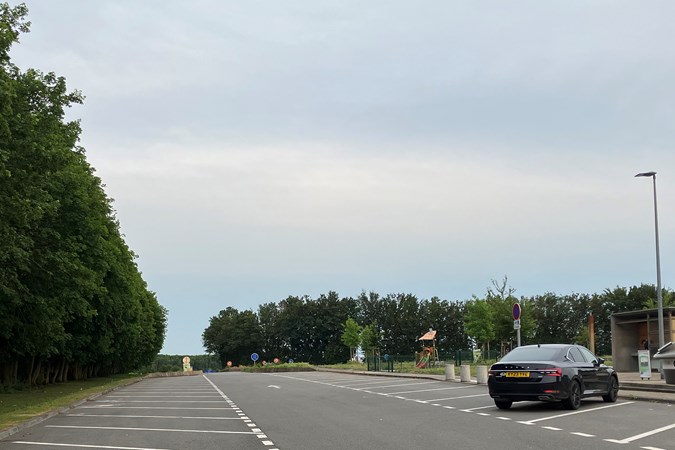
Once the day’s work was done (after a night’s sleep, I hasten to add), it was time to turn around. Leaving around lunchtime, I decided to drive back home in one shot, figuring the Superb would need a top-up and just one fuel stop for the 855-mile journey. As it happened, this proved to be the case, and after 14 hours on the road, I made it back home – tired, but in no way stressed.
So, job done, then? Yes and no. Yes, because I’d done the sustainability thing, and enjoyed a couple of nice days out of the office. No, because it wasn’t quite as comfortable as I’d hoped. The L&K’s seats don’t offer quite enough back support for really long journeys.
After a couple of hours, the aches kick in and although the seat massager does alleviate them to a degree, it’s not strong enough to have a huge effect. As I never similarly suffered in the Sportline, I reckon if you’re clocking up the big miles, that might be the version to go for. Either way, it still beats a cramped flight in Economy.
Update 5: practicality and launch control
Our Superb is fast, comfortable and economical. But is it any good at carrying people?
Long story short – yes it is. I handed the keys to the Superb over to one of our Senior Staff Writers, Luke Wilkinson, as he needed it to ferry his grandparents from Cumbria to his sister’s graduation in Glasgow. As far as I’m aware, there weren’t any complaints from them about comfort.
Report by Luke Wilkinson
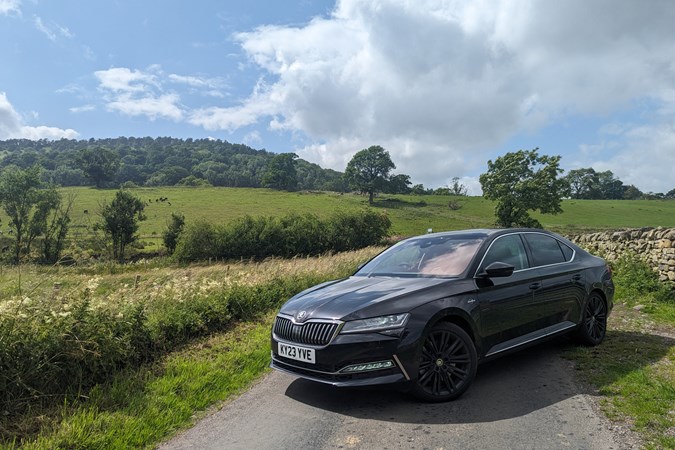
I’m a very proud big brother because my little sister has just graduated from the University of Glasgow. Her ceremony was in June and, naturally, the entire family wanted to be there to cheer her on as she was capped. However, that meant I needed to find something comfortable to ferry my grandparents to Scotland in.
At the time, I was running a Suzuki Swift Sport as my long termer. It was great fun for a young whippersnapper like me, but it was also very loud on the motorway, cramped inside and offered barely enough space in the boot for one suitcase, let alone four. Not ideal, then. Thankfully, Keith was very happy to lend me his Superb for the occasion – and I couldn’t have wished for a better car.
With the seat in my driving position, my Nan had a good two feet of knee room. She also had enough headroom to wear a stovepipe hat if she fancied – and, in Comfort mode, the Superb suspension was soft enough to iron out every crease in the M74.
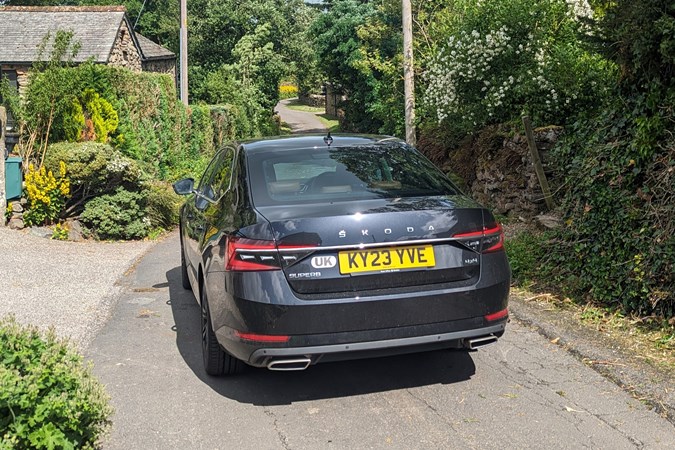
My Grandad was rather excited and wanted to sit up front. He was equally well catered for, although he spent most of the journey marvelling at the Superb’s infotainment screen and air-conditioned seats. There was also so much room in the boot, that our cases were rattling off the rear suspension turrets as we rounded corners.
What I was most impressed with, though, was how easy the journey was on me. We left my Mam and Dad’s house at 5am to be there in good time for the ceremony, yet I rolled out of the driver’s seat in Glasgow feeling completely refreshed. I’ve driven the same route in everything from my battered old Mini to range-topping premium SUVs – nothing was as easy as the Superb.
My only complaint is the gearbox. It has a coasting function, which shifts the car into neutral when you’re not accelerating. I can only assume it’s there to save fuel, but I found it a little disconcerting to drive as, when you lift your foot off the throttle, there isn’t any engine braking to slow you down. That makes it more difficult to adjust your following distance to the car ahead on the motorway.
So, if the car ahead eases off the throttle you need to dab the brake pedal to keep a safe distance, which I hate doing on the motorway. The brake should only be used in an emergency – unnecessarily braking on the motorway can slow traffic to a crawl as the drivers following you all paw their brakes in quick succession, assuming there’s some sort of hazard ahead. Thankfully, you can get around the issue by locking the Superb’s gearbox in manual mode and shifting into seventh gear.
Speed and power
Once the graduation festivities had ended and we returned home, I took my Dad out for a spin in the Superb. We both like big, fast saloons from the 1990s and early 2000s – and the 280hp Superb is the closest thing you can get these days to a Vauxhall Senator 24V or a V6-engined Alfa Romeo 166.
While we were pottering around the Lakes, I remembered something my colleague, Alan Taylor-Jones, told me about Volkswagen Group vehicles. If the VAG car in question has a DSG automatic (which our Superb does), it’ll also have launch control fitted as standard.
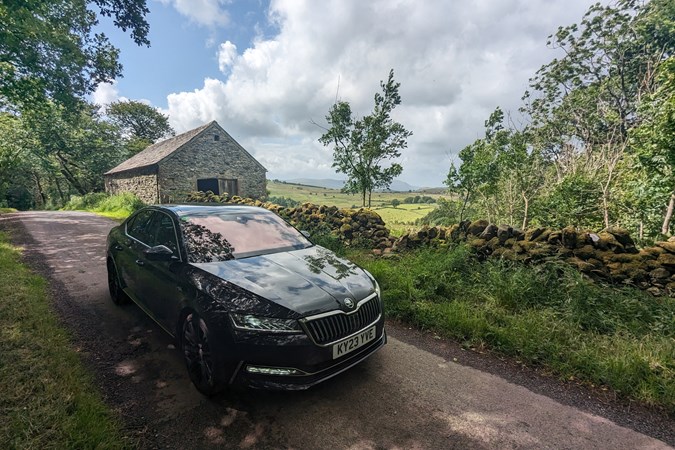
Apparently, the Volkswagen Group built its seven-speed automatic to suit its fastest cars, such as the Volkswagen Golf R and Audi RS3. However, it didn’t make financial sense for the firm to downgrade the gearbox for its more humdrum models. That means everything from a 1.0-litre Volkswagen Polo to a diesel Skoda Kodiaq comes equipped with launch control. So, because my Dad and I both have a mental age of nine, we decided to check whether the Superb’s launch control system worked.
For the uninitiated, launch control is a piece of technology that makes a car accelerate from a standing start like it’s been fired out of a cannon. To activate it on the Superb, you disengage the traction control, put the car in Sport mode, plant your left foot on the brake and mash your right foot into the throttle. Then just wait for the activation message on the dashboard and lift off the brake when the system says it’s good to go.
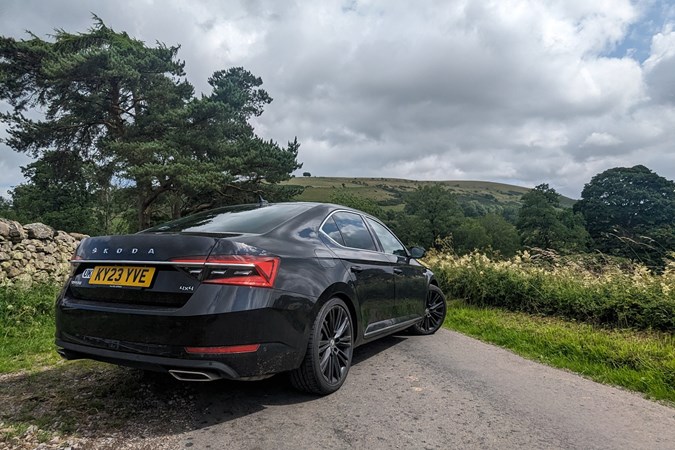
Neither of us were prepared for the savagery of the Superb’s acceleration. We didn’t expect a huge, leather-lined family barge to accelerate like a sports car – but it does. Skoda says it can sprint from 0–62mph in 5.1 seconds, but it feels way quicker than that from behind the wheel.
It’s delightfully aggressive, drop-kicking your diaphragm into the rear seats like an old-school turbo car the second you lift your foot off the brake. What’s more, because the Superb has four-wheel drive, it can launch like that in all weathers. We’re from the wettest county in England – so trust me when I say that we tested it thoroughly. Between fits of laughter, that is.
It has an extraordinary breadth of ability, this Superb. I sincerely hope Keith can let me have another go in it before it heads back to Skoda.
Update 6: Running costs – and a trip back home
Our Superb is great at crossing continents, but will you pay for it majorly at the pumps?
Long story short – yes and no. I was invited to see this car’s replacement being unveiled in Prague, and couldn’t think of a better way of getting there than behind the wheel. But would it be painful at the pumps?
Report by Keith Adams
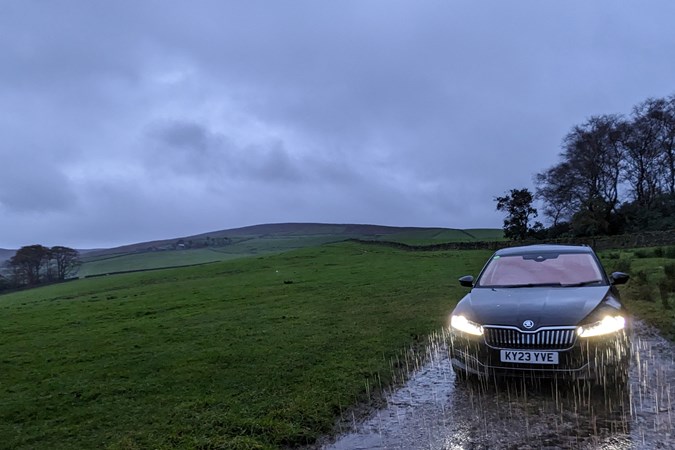
We’ve been living with the Skoda Superb for six months and now have a definitive view on its appetite for fuel. It’s a good story, on the whole, and as concluded earlier in this test, there is great potential for excellent economy if you drive it gently.
The good news is that at UK motorway speeds, and sticking fastidiously to the limits and it’s entirely possible to beat 40mpg on a long and traffic-free run. As I’ve said before I’m more than happy with that considering the performance potential this car has.
When Skoda got in touch recently to invite me to see this car’s replacement being unveiled in Prague, I decided it made much sense to take the car. What great perspective I’d get – seeing what changes have been made, while allowing this car to do its absolute best.

How did it perform on the way?
The route map shows that from my home in the north west to Prague is a smidgeon more than 1,000 miles. For a car like the Superb, this is a walk in the park – the limitation is human. So, I decided to stop overnight in Germany to break up the journey into two for an overnighter in Frankfurt.
It was an early start, and I was expecting to get to the Eurotunnel terminal in Folkestone for lunchtime. Except that I’d not factored in how brutal the M6 can be when things go wrong. I’d reasonably expect it to take five hours to get there, and in the end it took rather longer as I chugged through various towns and villages in order to avoid this broken motorway.
It’s times like this, I am thankful this car has a good adaptive cruise set-up, which allows it to minimise stress when trickling through traffic jams. However, by the time I reached Folkestone after 320 miles, it was late afternoon, and I was pretty fed up.
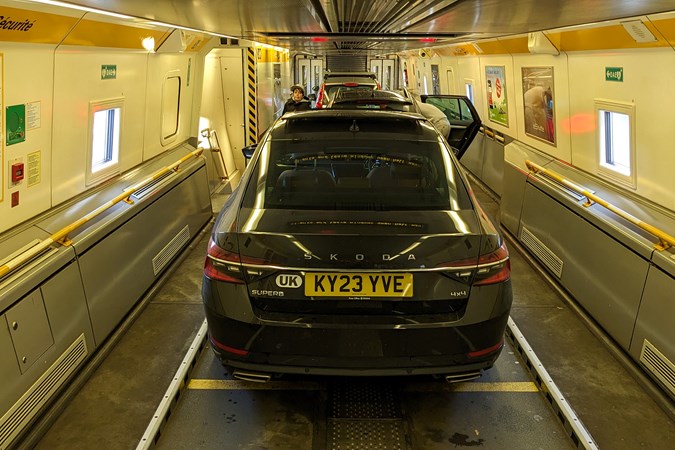
I needn’t have worried. Yes, I had another 370 miles to cover before I’d hit my bed, but I was still reasonably rested. As soon as I hit France, traffic subsided and the Superb could really get into its stride. The higher speed limits saw the fuel consumption increase, and as Belgium was passed and Germany entered, the previously impressive mpg figure had dropped somewhat.
Once into Germany it was quiet and the weather was good, and as soon as the limits lifted and the conditions allowed, I upped the pace further and gave the Skoda a chance to really hit its stride. And it really is good at high speeds – it comfortably cruises at 100-120mph, and feels to have so much left in hand.
Out of curiosity, I had a quick stab at seeing what it would do – and as a long straight opened up, I increased the speed. According to Skoda, this car is limited to 155mph, but I can confirm that an example like this, which is in rude health, will easily exceed that – and according to my GPS, the digital speedo is only a couple of mph out.
The last push to Prague…
According to my notes, the first day looked like this:
- UK leg stats: 320 miles – 8hr 10min
- EU leg stats: 370 miles – 5hr 30min
I can’t think of a better way of illustrating the difference between driving in the UK and mainland Europe.
The second day would be somewhat easier. Just 320 miles to Prague from Frankfurt, and although the weather was foul and the autobahn littered with roadworks, I was still relaxed and imcreasingly impressed with the Superb. And when ithe road did open up, I returned to that spookily easy 120mph cruise.
Driving into Czechia, I remembered to stop and pay the motorway toll, and rest my brain to return to an 80mph cruise. An interesting observation is that the Superb’s ride quality remained unerringly composed throughout, and that France’s, Belgium, Holland’s, Germany’s and Czechia’s motorways are ALL in considerably better condition than ours.
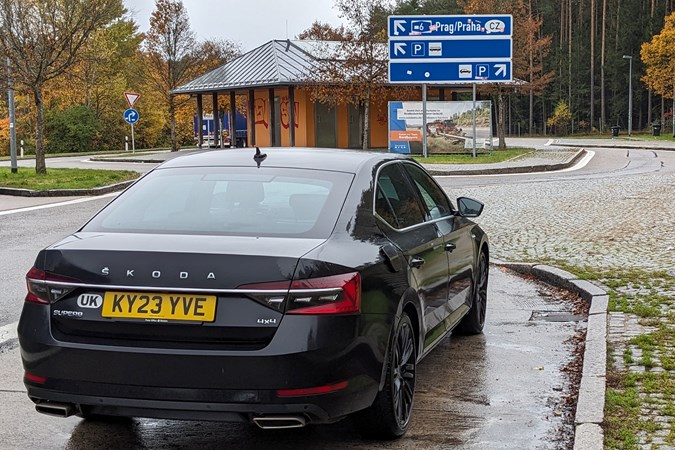
The end is nigh…
As Prague hoved into view, the pace dropped as the traffic built up. The last 15 miles took an hour, on account of us staying in a hotel right in the centre of the city. For a fan of these cars, Prague is a treat – it’s full of them. But I still felt that little bit special in my L&K with its glorious caramel-coloured leather seats.
After leaving Frankfurt at breakfast, I arrived at my hotel in time for afternoon tea, feeling fresh, relaxed and very happy. The car was an absolute treat on the journey, and thanks to the easy performance, brilliant adaptive cruise control and comfortable, massaging, seats (which didn’t cause me any discomfort unlike earlier long journeys) – once again, I never once regretted avoiding flying.
Oh yes – fuel consumption. On the slower UK leg, the Skoda averaged 39.1mpg, which dropped to 33.7mpg between Calais and Prague. I’ll tell you about the return journey in the next update – as that was completed in a Superb TDI, which made for a fascinating comparison.
As for the new Superb, I’m happy to report than they’re sticking to the same formula, and you can read my thoughts (plus driving impressions) over on CAR. The only sadness that tinges this story is that this one is now considered a used car…

Update 7: Running costs – comparing with diesel
We swapped our Superb petrol for a diesel-powered version in Prague for the journey home. How did it compare?
Long story short – Diesel is cheaper, but the gap isn’t as much as you’d think. But what it does do much better is going the distance on a full tank
Report by Keith Adams
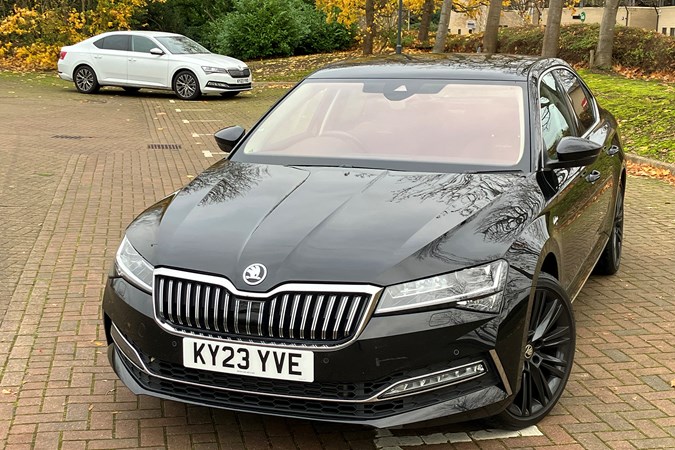
If you’ve got this far, you’ll know this is a superb (sorry) long-distance cruiser and, if you’re light on the accelerator, not too shabby on fuel consumption. However, with the price of petrol and diesel being what it is, anything to alleviate your financial suffering is bound to be a good thing.
And that’s why I found myself swapping my beloved Superb 280 in downtown Prague for a similarly-specced diesel version for the return trip. It would be interesting to see what mpg I’d get. Considering the petrol one managed 36.0mpg, that translated into a cost of £189.35 at the UK average pump price of £1.50 per litre for the trip. A little more than a budget flight, but a damned sight more comfortable.
Surely, the diesel would do better – even if the pump price is higher. Filling up in Prague, I had an inkling it would go a whole lot further – brimmed, the anticipated range was nigh-on 800 miles. Admittedly, it was very gently driven on the way down, but even so… my petrol Superb never managed to show a range of 455 miles. Bring it on!

How far on a tank?
Once underway, it was clear that my average mpg was going to be rather lower than the previous driver’s. But after a couple of hundred miles, and back into Germany, it seemed to settle down to 55mpg.
At speed, there’s little difference in terms of motorway refinement, and the main difference between the two was in top-end pull. The diesel was muscular and satisfying, but a little way away from the 280’s urgency. In the UK I suspect most drivers won’t be that bothered, favouring the diesel’s relaxed demeanor.
On a long journey your brain soon recalibrates to the glacial rate the fuel needle drops, and it just becomes a relaxing way of covering big miles. In the end, Germany was crossed with nothing but a couple of driver rests, and it wasn’t until Brussels that it was refilled – and there was still more than a quarter of a tank left in it.
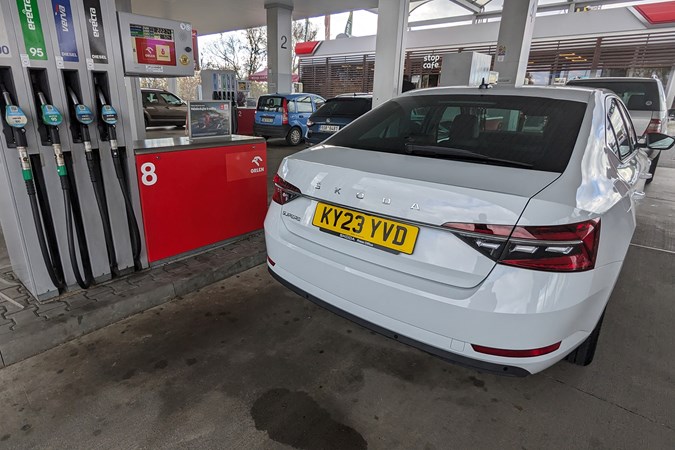
It was at this point, it was beginning to look like I could get home in one hit from Prague – the Eurotunnel was hit with the fuel gauge still on max. And so it proved – I continued to the North West and when I rolled up at home, there was still a little under half a tank left. And I’d not been hypermiling by any means.
So, how did it do. Well, the average mpg was 56.1mpg, which worked out at a cost of £127.11 at the UK average pump price of £1.57 per litre for diesel. So, it worked out at a whopping £62.24 cheaper for the journey at UK prices. So, an easy win for diesel on cost.
And although I missed the top-Skoda Superb 280 long-term testend performance and the composed grip at speed thanks to four-wheel drive, I was just as relaxed and comfortable at journey’s end, making this the best option for long-distance driving. However, I’d still take the 280, because my heart overrules my head on these things.
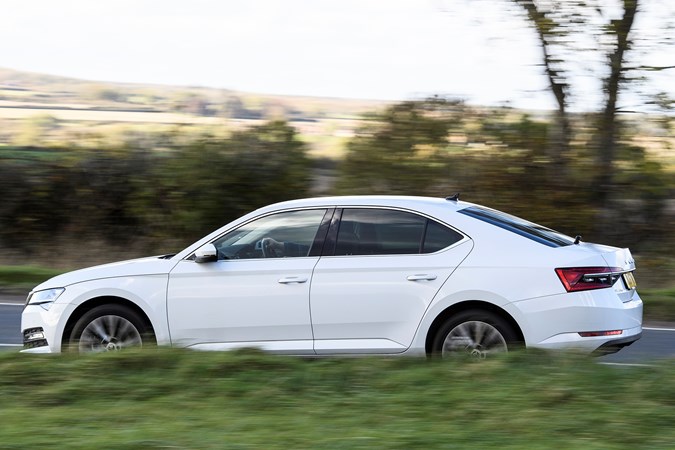
Verdict
Six months in, and my favourable opinions about the Superb have been vidicated. It’s a brilliant family car built from tried and tested components with a roomy interior, and exceptional long-distance comfort and refinement.
Gripes are few and far between and now fall under the prism of being a used car now the new Superb has been launched and this one is no longer on the new car price lists. As such, they’re reliable, good value and are trusted by their most loyal customers.
in reality, the best model to own in the real world is the 2.0TDI diesel, but that lacks the stardust of the 280, especially in L&K trim. Running and fuelling costs are on the right side of acceptable, and the performance really is worth writing home about. I genuinely look forward to seeing just how much of an improvement the new one is, as this one is already pretty much perfect for me.
Skoda Superb long-term test: scores on the doors
Model tested: L&K Hatch 2.0 TSI 280 DSG 4x4
| Current mileage | 10,450 |
| Real-world average fuel economy | 35.4mpg |
| Official combined fuel economy (WLTP figures) | 33.2-34.6mpg |
| Parkers ‘MPP’ (Miles Per Pound) calculation | 4.9 – 5.1 mpp |
| Dates tested by Parkers | April-November 2023 |
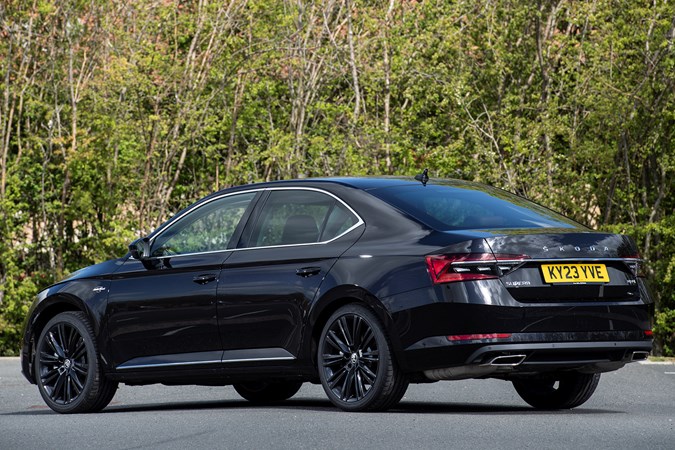



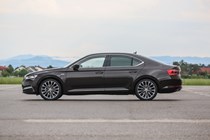
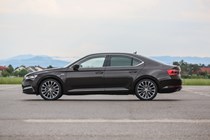
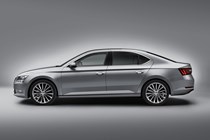
.jpg)
.jpg)
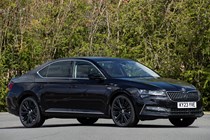
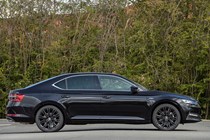
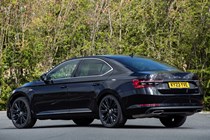
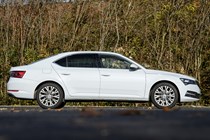
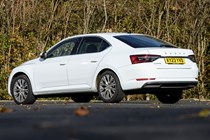
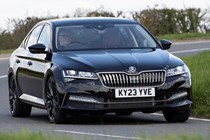
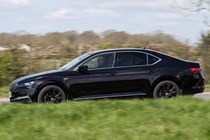
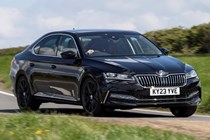

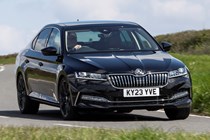
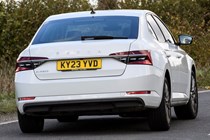
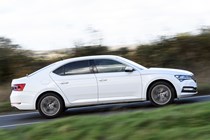
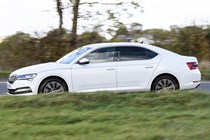
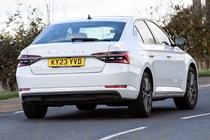
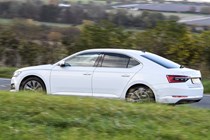
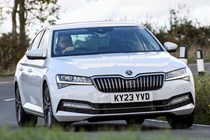
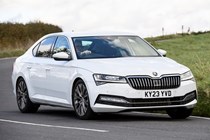
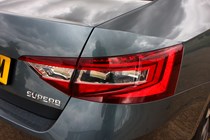
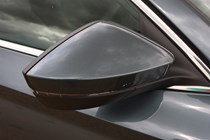
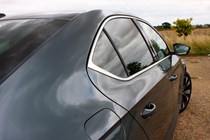
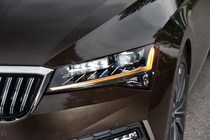
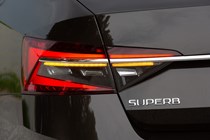
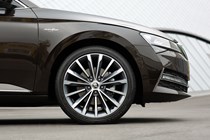
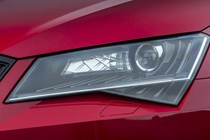


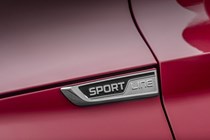

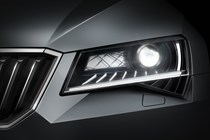
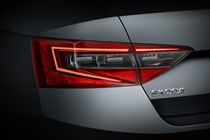
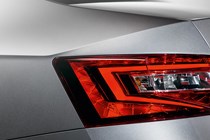
.jpg)
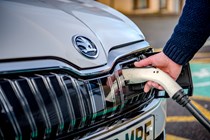
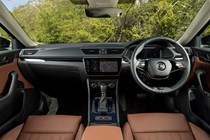
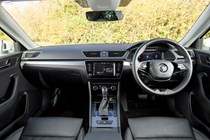
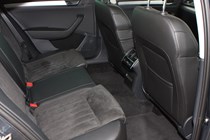
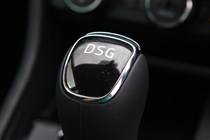
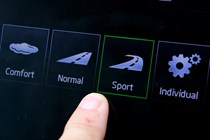
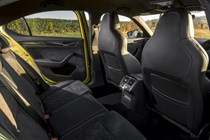
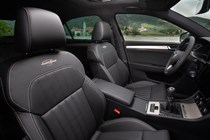
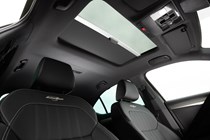
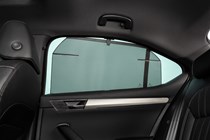
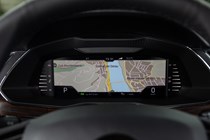
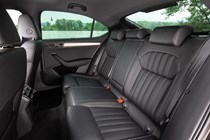
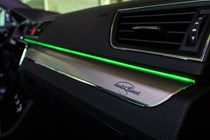
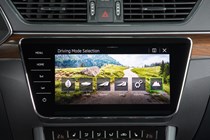
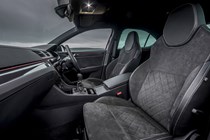
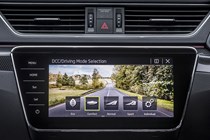
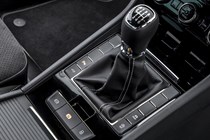
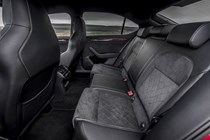

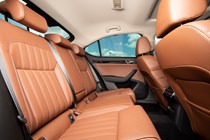
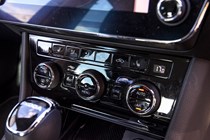
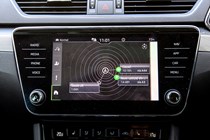
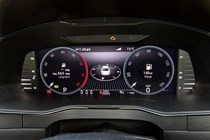
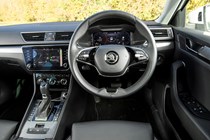
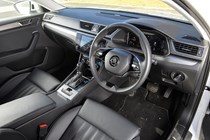
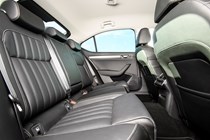
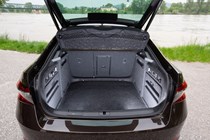
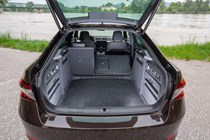
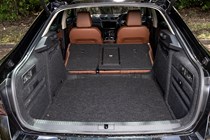
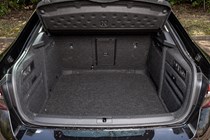
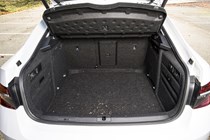





.jpg?quality=50)
.jpg?quality=50)































.jpg?quality=50)































